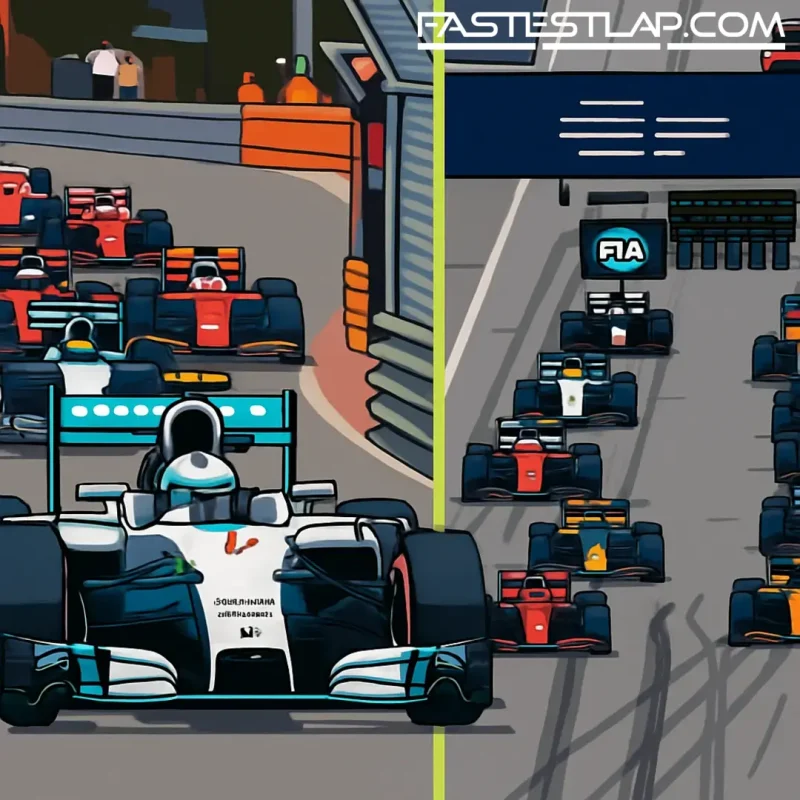FIA plots ‘ADUO’ safety net to stop a 2014-style power unit runaway in 2026
The FIA has quietly bolted a safety net under Formula 1’s 2026 engine rules, hoping to head off another season zero where one supplier disappears up the road while everyone else scrambles for answers.
In a set of tweaks signed off by the World Motor Sport Council this week, the federation will introduce an Additional Development and Upgrade Opportunities scheme — “ADUO” in the shorthand — that gives any struggling power unit manufacturer extra tools to catch up during the season. Think of it as rubber-banding for engines, written into the regulations.
F1’s next-generation power units keep the familiar 1.6-litre V6 but ditch the MGU‑H and swing the hybrid contribution up, aiming for a near 50:50 split between combustion and electric. It’s a big philosophical shift, and big shifts can produce big gaps. The FIA knows that as well as anyone; the last time we tore up the engine book in 2014, Mercedes nailed the hybrid era from day one and the rest of the field spent years stitching slowly back together.
This time, the guardrails are built in.
How ADUO works
– The FIA will track performance across the season and assess relative competitiveness at three checkpoints: after Race 6 (25% distance), Race 12 (50%), and Race 18 (75%).
– If a manufacturer is lagging, they’ll be granted additional development and upgrade opportunities to close the gap.
– Those opportunities can include a change of homologation on the power unit, relief within the power unit cost cap, and extra test-bench hours.
– Separate measures are available for serious reliability problems, again via cost cap relief, so early-season gremlins don’t cripple a programme under the new financial framework.
It’s a notable pivot from the engine freeze that set in at the end of 2021 and held through the current rules. Back then, performance was effectively locked; in 2026, the door isn’t thrown wide open, but it’s no longer deadbolted. The FIA’s idea is simple: let the team that nails it enjoy the payoff, but only for so long. If someone misses the initial target, the ladder to climb back is already in place.
The change sits alongside a handful of other refinements to the 2026 Technical Regulations, with updates flagged to the survival cell, suspension and aero components, plus tweaks to the power unit financial and operational regs. Those will be detailed when the published rulebook is refreshed following the WMSC’s meeting from the FIA’s new Knightsbridge offices in London.
Who’s under the tent in 2026?
Per the framework outlined, five power unit manufacturers are set to supply the grid for the first year of the new formula: Ferrari, Mercedes, Red Bull Powertrains, Honda and Audi. If any of them stumble at the start, the ADUO checkpoints act like pit boards held out by the FIA: you’re off the pace — here’s a legal way to fix it.
Why it matters
The politics of equalisation always run hot in F1. No one wants a spec series, but no one wants a three-year write-off because a supplier missed an interpretation in year one, either. The old token system and the ability to give customers different hardware only compounded the imbalance at the start of the last hybrid era. ADUO is the federation’s attempt to thread that needle: keep the competitive edge, avoid the competitive chasm.
There will be questions. How transparent will the performance assessments be? Where’s the line between “catch-up” and “assist”? And how do you keep the quickest supplier honest without punishing them for doing the best job? Those debates will run. But the direction of travel is clear: in a world of complex hybrid rules and cost caps, the FIA doesn’t want the championship decided by who guessed the regulation riddle best on day one.
The bottom line
For 2026, the sport isn’t just changing engines — it’s changing the philosophy around how to manage a brand-new engine era. The ADUO concept gives the FIA a lever to pull if the spread gets silly. It won’t guarantee parity, and it shouldn’t. It might, however, save us from a winter of “if only we’d started with 30 more horsepower,” and that’s a healthier way to start a new chapter.




